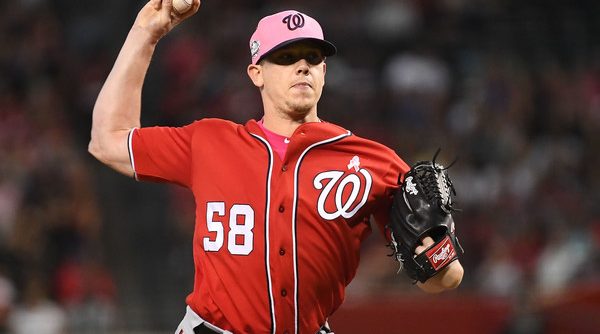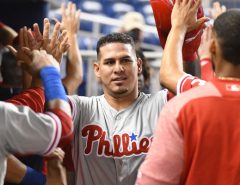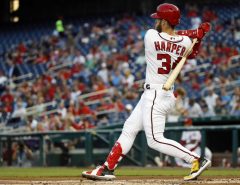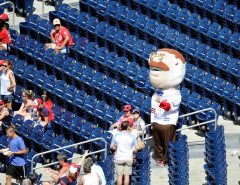Jeremy Hellickson began his tenure as a Washington National as a relative afterthought: a low-risk insurance policy for a franchise with little pitching depth, someone that could be counted on to at least throw strikes in Triple-A and in the Majors if injuries were to occur. Flash forward to mid-April, when A.J. Cole finally lost his ninth life as a Nats prospect and was demoted from the fifth starter role (and traded a week later) in favor of the 31-year old veteran Hellickson. Not much is generally expected from the number 5 guy in a rotation besides staying giving his club some quality innings so as not to destroy the bullpen.
Yet here we stand halfway through May with Hellickson having started six games and the numbers are astounding. 2.20 ERA, 0.86 WHIP, 5.2 K/BB ratio, and while he only has one decision (a win), the Nats are 4-2 in his starts. Save perhaps the otherworldly Houston Astros, no team in baseball has been as pleased with their fifth starter as Washington. But is it sustainable to any extent? Let’s look at the underlying numbers.
Hellickson has had an interesting career. He broke into the Tampa Bay Rays’ rotation in 2011 and was quite good with two years of roughly 3.00 ERA pitching. It has taken a downturn in the time since, posting a sub-4.00 ERA only once since 2012. Now, however, he seems to have adjusted to his flaws and regained form and confidence. We can trace that back to a couple facts.
First, while Hellickson was never a serious strikeout guy, his worst years can when he stopped getting whiffs, appearing to try to pitch more like a present-day Gio Gonzalez. He has the stuff to get strikeouts, and certainly pitches better when a larger number of his outs come via strikeout. This point leads into the next: Hellickson is pretty much not allowed to pitch to a team more than twice through the order.
These splits were so noticeable to the Nats coaching staff that he has only faced hitters three times in one start: May 8th when he took a perfect game in to the seventh inning but allowed two fluky hits and was removed before getting the third out in the seventh. This short leash has been noticeable to all, and while it seems harsh, especially in games where he is mowing through lineups and keeping a low pitch count (5 innings on May 13th with only one run on three hits and 61 pitches before being removed after facing the lineup exactly twice through), it is hard to argue with the success of the plan. Plus, it is easy to believe that part of his increased strikeout rate compared to previous years could be attributed to him being able to give more to every pitch: he knows he won’t be going deep into a game, so there is nothing to save energy for.
So back to the question of whether the current success can be continued. I would argue yes, it can be, albeit not quite to this insane level of excellence. One noticeable part of his success is a change in his pitch usage. From 2014 to 2017, Hellickson used his fastball 36% of the time, his changeup 26% of the time, his curveball 16% of the time, his sinker 15% of the time, and the rest was split between the slider and the cutter. During that time, batters found great success against the fastball and sinker, hitting for a 2.99 and .280 average, respectively, with roughly league average BABIP to suggest that that was no accident. No one could really touch his curveball though, with hitters batting .184 with a .292 slugging. His changeup was also effective, with hitters hitting .223. This season, he and the Nats coaching staff have taken that to heart: he uses the curve and change more than any of his fastballs, throwing them 48% of the time and holding hitters to below .190 on both pitches. This has translated into success with the fastball now that hitters can’t sit on the heat: thrown only 20% of the time, hitters have only one hit off the fastball this season while striking out nine times.
Hellickson is one of the guys you can really attribute advanced stats to his finding success, even if it is a small sample size and still early in the year. He keeps hitters off balance with his mix of pitches, but the lack of blow-away stuff leaves him vulnerable once hitters have seen him a couple times.
What will be interesting is seeing whether he will be punished by teams that have already faced him this season. Will those games be like Hellickson is actually pitching a third and fourth time around the order? He has faced Arizona twice already, holding them to eight hits and three runs in 10 and a third innings. Perhaps that answers that question, but time will tell, and he is firmly cemented in this rotation so we will be able to follow along. So far, so good for Hellickson and the Nationals.





Leave a Reply